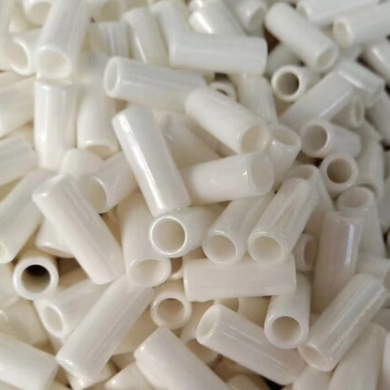Why Ceramic Housing Stands Out in Automotive Applications
Automotive components operate under extreme conditions: high temperatures from engines, rapid temperature fluctuations, exposure to oils and chemicals, and the need for reliable electrical insulation. Ceramic housing, crafted from advanced materials like alumina (Al₂O₃), zirconia (ZrO₂), silicon carbide (SiC), and silicon nitride (Si₃N₄), is engineered to thrive in these environments.
Its key advantages include:
- Superior High-Temperature Resistance: Withstand extreme heat (up to 1750°C for high-purity alumina), making it suitable for engine sensors, exhaust systems, and thermal management components.
- Excellent Insulation: High electrical resistivity (exceeding 10¹⁴ Ω·mm²/m for alumina) ensures safe operation in electrical systems, such as ignition coils and battery management modules.
- Mechanical Strength: High bending and compressive strength (e.g., 1200 MPa bending strength for zirconia) resists vibration and impact—critical for durable automotive parts.
- Corrosion Resistance: Impervious to oils, fuels, and environmental contaminants, ensuring long-term reliability even in harsh conditions.
Material Options for Automotive Ceramic Housing
Different ceramic materials offer tailored properties to meet specific automotive needs:
-
Alumina (Al₂O₃):
- Available in various purities (95% to 99.99%), balancing performance and cost.
- High-temperature tolerance (up to 1750°C for 99.99% alumina) and excellent insulation make it ideal for sensors, valve covers, and electrical connectors.
- Low dielectric loss (<0.0001 at 1MHz) ensures stable performance in high-frequency automotive electronics.
-
Zirconia (ZrO₂):
- Exceptional toughness (10 MPa·m¹/² fracture toughness) and bending strength (1200 MPa) make it perfect for high-stress components like fuel injectors and turbocharger parts.
- Withstands thermal shock, making it suitable for rapid temperature change environments.
-
Silicon Carbide (SiC):
- High thermal conductivity (100 W/m-K) and temperature resistance (1650°C) suit heat sinks and power electronics in electric vehicles (EVs).
- Hardness (9.5 on Mohs scale) resists wear, ideal for rotating components.
-
Silicon Nitride (Si₃N₄):
- Outstanding compressive strength (3000 MPa) and low thermal expansion (3.1×10⁻⁶/°C) make it suitable for high-load parts like bearing housings and engine valves.
Applications in Automotive Parts
Ceramic housing plays a vital role in diverse automotive systems:
- Engine Sensors: Protects temperature, pressure, and oxygen sensors from extreme engine heat and vibration.
- Electrical Systems: Insulates connectors, coils, and battery components, ensuring safe and efficient power distribution.
- Exhaust & Emission Control: Withstands high temperatures in catalytic converters and exhaust gas recirculation (EGR) systems.
- EV Components: Enhances thermal management in motor controllers, inverters, and battery modules, critical for EV performance and safety.
Choose High-Quality Ceramic Housing for Your Automotive Projects
Whether you’re developing next-gen sensors, EV power systems, or durable engine parts, ceramic housing delivers the reliability and performance automotive applications demand. Our ceramic housing products, available in alumina, zirconia, SiC, and Si₃N₄, are precision-engineered to meet strict automotive standards.
Contact us today to explore tailored ceramic housing solutions for your automotive components—where high performance meets long-term durability.
This article integrates key product details from the website, emphasizes automotive applications, and highlights material properties to boost SEO relevance for users searching for ceramic housing in automotive parts.







